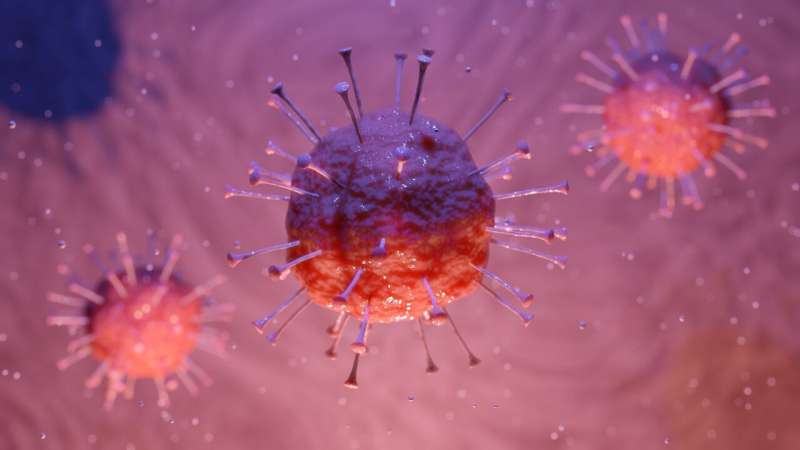
Researchers at the Australian National Phenome Centre (ANPC) at Murdoch University have discovered distinct blood signatures present in patients with COVID-19 that could significantly improve COVID-19 testing and long-term monitoring.
“This work opens the door to a new type of test that does not depend on detection of the virus itself but that can help discriminate COVID-19 infections, especially when used in conjunction with conventional PCR testing,” explained Professor Jeremy Nicholson, Director of the ANPC and leader of the research.
“This would increase the overall security of existing testing procedures, such as those used in quarantine situations, which may be key to future easing of State and National lock-down protocols especially with the advent of the new UK B.1.1.7 corona virus variant which is significantly more infectious and affects children more easily.”
“We really do not want the new variant to escape into the general population of WA or anywhere else.”
“The new variant poses a much more significant infectious threat than the previous versions of the virus and although it is not significantly more virulent it is much easier to catch and that includes children,” said Professor Nicholson.
The team applied advanced analytical chemistry methods to study the plasma of patients suffering from COVID-19 infection and found diagnostic markers that were not present in respiratory patients that tested negative for the virus.
“We also found that some patients’ metabolic patterns remained abnormal even though their respiratory symptoms had declined, and the patients were determined to be virus free,” said Professor Nicholson.
“This raises the possibility that some patients may not fully recover from the systemic effects of the infection and are left with other metabolic disorders that change their long-term disease risks and this is a possible concern for so-called recovered patients.”
Specifically, the research found that plasma lipoproteins—structures that transport fats around the body—in the blood of COVID-19 patients had changed dramatically during infection. They became closer to patterns typically found in patients with diabetes, atherosclerosis and cardiovascular disease.
“What we don’t know yet is how readily reversible these patterns are with recovery time—it is something that we are now working on and expect to have answers very soon,” said Professor Nicholson.
“These metabolic changes were closely linked to the immunological parameters that drive or are associated with the lung pathology and indeed are involved in the most severe forms of the disease.
“This is consistent with our earlier findings showing that COVID-19 is a systemic disease with multi-organ effects, that can occur in addition to the better-known lung pathology.”
Professor Nicholson said this work underlines the importance of long-term follow up studies on “recovered” COVID-19 patients, particularly those experiencing persistent effects, to assess their health status and take steps to mitigate any long-term effects of COVID-19 exposure.
“These findings are critically important to our understanding of this disease,” said Dana Henderson, Chief Executive Officer of Spinnaker Health Research Foundation.
“Spinnaker funded this research because we believe we must remain vigilant to the possibility of long-term health implications and do all we can to closely monitor those who may be at risk of life-impacting complications as a result of infection.”
The study involved the analysis of blood plasma samples collected from a cohort of adults in Western Australia.
Participants were recruited from the Fiona Stanley and Royal Perth Hospitals: patients who presented COVID-19 disease symptoms and subsequently tested positive; healthy adults who had not exhibited COVID-19 disease symptoms; and patients with COVID-19 disease symptoms who tested negative.
The samples were analyzed using state-of-the-art metabolic phenotyping technologies at the ANPC, which can reveal the molecular structures and quantitative bioanalysis for almost any type of biological liquid or solid.
This analysis provided the unique biological ‘fingerprints’ of each sample, on which the research findings were based. The Australian National Phenome Centre will continue to undertake research into the long-term health risks presented by COVID-19 and the path to recovery.
“We have obtained funding from the Spinnaker Health Research Foundation, the McCusker Charitable Foundation and the WA Government to help undertake these studies,” said Professor Nicholson.
Murdoch University

